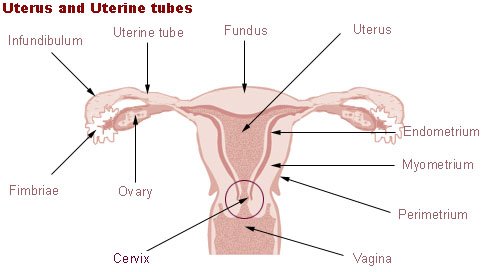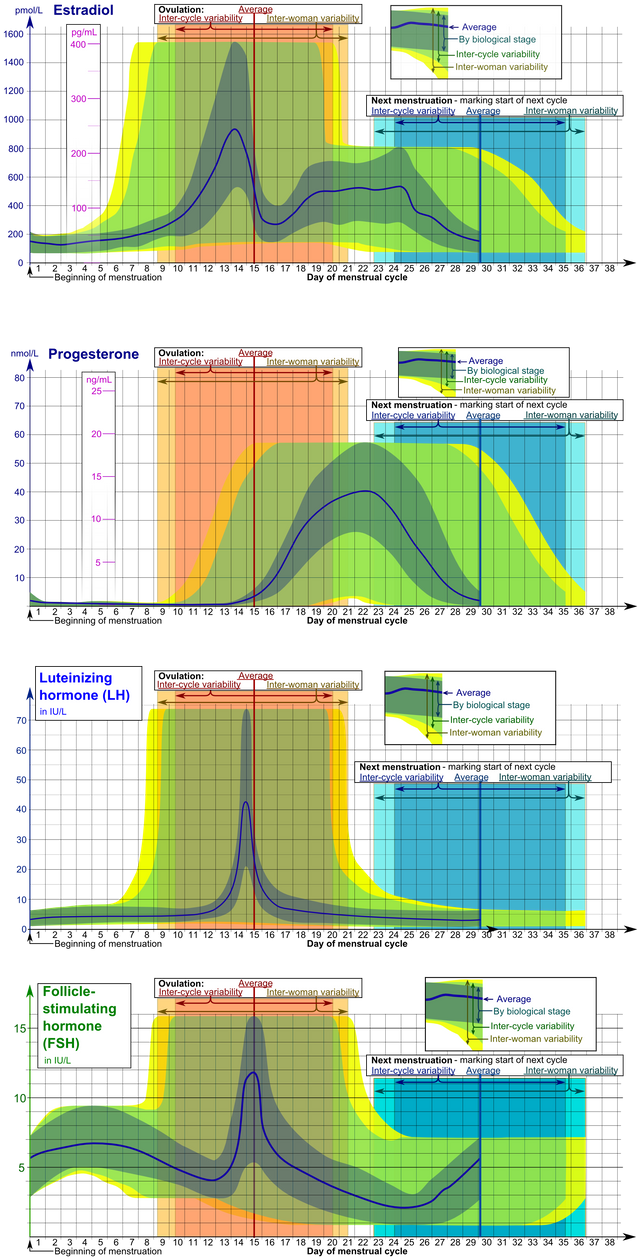DYSMENORRHEA,THE BURDEN OF WOMEN
Most of us know what menstruation is all about. When the word menstruation is mentioned, The female gender comes in mind. As a matter of fact is only the females that experiences menstruation. Menstruation is natural to be experienced and it is the monthly shedding of female uterine lining containing blood and tissue that exit the body through cervix and vagina. Every female experience menstruation as far as they have reached puberty age. Menstruation is commonly known as PERIOD among women. In Africa, during the olden days menstruation is seen as period in which women are seen as unclean creatures. Menstruation is a major stage of puberty in girls and it is one of the physical signs that a girl is turning into a woman.
MENSTRUATION CYCLE
Menstruation cycle or menstrual cycle simply mean the recurrence of menstruation every month. It’s a monthly flow and the appearance of first menstrual flow known as MENARCHE marks the onset of pre puberty in girls. Menstruation is control by hormones and it vary among women. Menstrual cycle start between 12 to 15 of years of age and continue until menopause about45 to 55 years of age. Each menstruation usually last about 3 to 5 days and stops during pregnancy. One of the common sign that a woman is pregnant is when she stops seeing her period except in abnormal condition. Menstrual cycle occur due to rise and fall of hormones. Ovum is normally released from ovary into the uterus every month in preparation for pregnancy and waiting for sperm to fertilize it. After waiting without sperm fertilizing it, the ovum or egg in form of blood is passed to the outside body through vaginal. Menstrual cycle is normally counted from the first day of one period to the first day of the next period. It varies among women. Some have short menstrual cycle while others have longer cycle. During menstrual period, women normally experience pain in there lower abdomen, acne, tender breast, bloating, feeling tired and there mode changes. They may also experience menstrual cramps. On the average the length of a cycle is about 28 days but can be longer or shorter. There are normal physiological variation during the cycle like
• Age: menstrual cycle begins at puberty and become irregular at Variable age between 45 to 55 years, a period known as CLIMACTERIC and then cease completely which is known as MENOPAUSE few months or years later.
• Individual variation: as Individuals differs so as their menstrual cycle differs. Some may have short menstrual cycle while other may have longer menstrual cycle like up to 35 days.
• Effect of pregnancy and lactation: during pregnancy, menstrual cycle is suspended and suspended for Variable period during lactation.
• Physiological factors like hormones, diet can influence the timing, duration and regularity of the cycle
Menstrual cycle occurs in three phases namely follicular phase, ovulatory and luteal phase. Follicular phase is the first half of the cycle, the luteal phase is the second half of the cycle while ovulatory phase is in between them.
OVULATION
Ovulation is when matured ovum is released from the ovary and are moved to the fallopian tube ready for fertilization. Ovulation is period when there is possibility of getting pregnant if there is unprotected sex. The uterine wall thickens during ovulation in preparation for fertilization and pregnancy. It occur about middle of the menstrual cycle around 14 day of the 28 day cycle. Only one follicle normally ovulate even though two follicle can ovulate and the movement of ovum from ovary to the uterus is about 3 to 4 days. If sperm is released into the vaginal during this period, fertilization occurs in the fallopian tubes during ovulation the following.
some bleeding in the ovary from The site of ovulation and may cause pain by irritating the peritoneum. This phenomenon is known as MITTELSCHIMERZ
there is rise in the body temperature due to effect of progesterone secreted by the corpus luteum
there is fall in oestrogen secretion and luteinizing hormone surge
.ovulation Source:Wikimedia - CC BY-SA 3.0.
ENDOMETRIUM
Endometrium is the tissue lining the inner part of the uterus. It maintain the patency of uterine cavity. It align by columnar with stroma on which it rest o. The base of the Endometrium is supplied with blood from spiral arteries. Endometrium is supplied by two types arteries which are straight artery supplying the stratum basalis and the spiral artery supplying outer layer of the Endometrium.

the uterus showing endometrium. Source:Wikimedia - CC BY-SA 3.0.
The Endometrium consists of two layers which are functional layer and basal layer.
FUNCTIONAL LAYER is meant to provide optimum environment for implantation and growth of embryo. It is completely she’d during menstruation
BASAL LAYER is the layer in which the functional layer rest on top and it is nor she’d during menstruation
The function of Endometrium is to provide enabling environment for the developing foetus.
CYCLICAL CHANGES IN THE ENDOMETRIUM DURING MENSTRUAL CYCLE
During menstrual period, the Endometrium undergoes some changes and they appear in phases.
MENSTRUAL PHASE: when the ovum is not fertilized after ovulation. Hormonal support of the uterus reduces and the functional layer of the Endometrium degenerates. There is necrosis of the Endometrium believed to be caused by the prostaglandin and this lead to menstrual flow.
PROLIFERATIVE PHASE: this is the regeneration of the functional layer being shed during menstrual phase. There is lost of functional layer of the Endometrium during menstruation and the hormone, oestrogen secreted by the ovarian follicles help in the regeneration of the functional area.
SECRETORY PHASE: in this phase, the Endometrium becomes very vascular after proliferative phase and the Endometrium secrete copious thick glycogen rich fluid with the help of the hormone oestrogen and progesterone
HORMONAL CHANGES DURING MENSTRUAL CYCLE
Hormones control menstrual cycle and hormones of importance changes during the cycle. The hormone of importance include
FOLLICLE STIMULATING HORMONE (FSH):this hormone is secreted by pituitary gland in the brain and it’s function is to enhance maturation of the ovarian follicles. It is usually high throughout the menstrual cycle.
LUTEINIZING HORMONE (LH): It causes the release of ovum when it matures and it is secreted in the pituitary gland. Throughout most of the cycle, LH levels are low and reasonably stable dropping slightly during the luteal phase. There maybe rise in luteinizing hormone known as luteinizing hormone surge which gives sign of ovulation.
OESTROGEN: is secreted by the ovaries and is responsible for growing and maturing uterine lining. It is most abundant hormone in the first half of the menstrual cycle, it falls rapidly during ovulation and rises again in the mid luteal phase.
PROGESTERONE: is a sex hormone and it help to balance the effect o oestrogen. It’s produced after ovulation by corpus luteum and is high during luteal phase but falls few days before menstruation.

hormonal changes. Source:Wikimedia - CC BY-SA 3.0.
DYSMENORRHEA
Most women during menstruation experience pain in the pelvic region. In some women, the pain is severe while in others it’s moderate or minor pain. The pain is usually felt around lower abdomen. Dysmenorrhea which is painful menstruation is common among women who have heavy menstrual flow especially among the young ones. The important thing to note is that painful menstruation does not mean there is problem even though there maybe problem. It is normal to experience painful menstruation.
Dysmenorrhea is believed to be caused by destruction of the endometrial cells by prostaglandins released during menstruation. Prostaglandin and other inflammatory mediators released in the uterus contract the uterine muscle which in turn contract the blood vessels of endometrium depriving some tissue blood. The uterine contract and deprivation of oxygen to nearby tissues causes the pain.
The major sign and symptoms of dysmenorrhea is pain in the lower abdomen but individuals may experience nausea, headache, dizziness, fatigue etc. This signs start after ovulation and end after menstruation.
MANAGEMENT
Women during menstruation are expected to be hygienic and there are drugs available to relieve menstrual pain when it occurs. Non steroidal Anti Inflammatory Drugs like ibuprofen, naproxen, celecoxib etc. are used for relieving dysmenorrhea. Women who engage themselves on exercises rarely experience menstrual pain, that’s to show the importance of exercise to the body. The use of heating pad is also useful in the reducing the pain.
Thanks for passing by and hope you find it useful
REFERENCES
DYSMENORRHEA ~wikipedia
Hormonal changes during period~women inbalance
ENDOMETRIUM~wikipedia
OVULATION ~american pregnancy.org
Menstruation ~wikipedia
If you write STEM (Science, Technology, Engineering, and Mathematics) related posts, consider joining #steemSTEM on steemit chat or discord here. If you are from Nigeria, you may want to include the #stemng tag in your post. You can visit this blog by @stemng for more details. You can also check this blog post by @steemstem here and this guidelines here for help on how to be a member of @steemstem. Please also check this blog post from @steemstem on proper use of images devoid of copyright issues here.

A nice post on the female menstrual cycle. Keep it up.
Thanks man
Thanks man
Thanks man
Dear friend, you do not appear to be following @wafrica. Follow @wafrica to get a valuable upvote on your quality post!